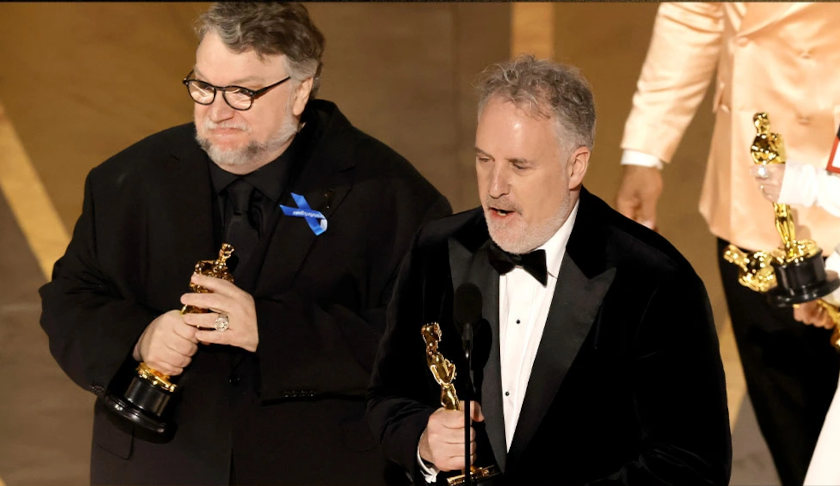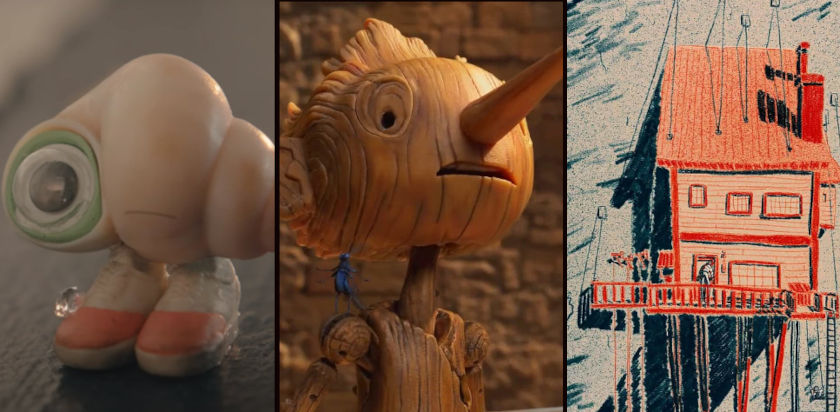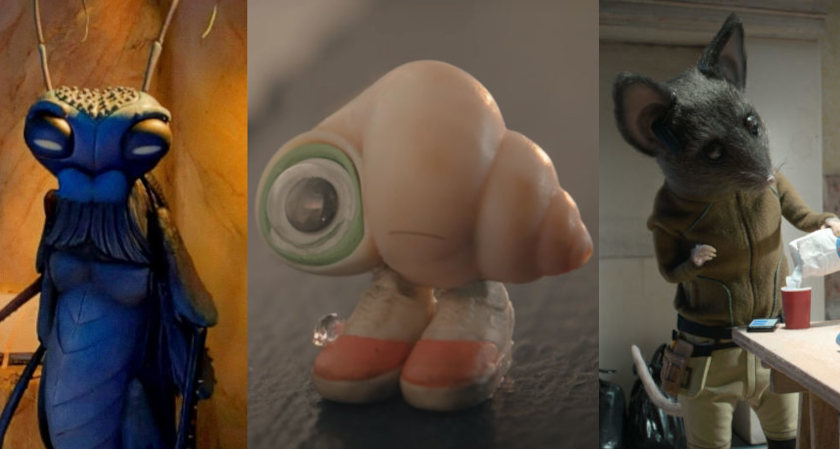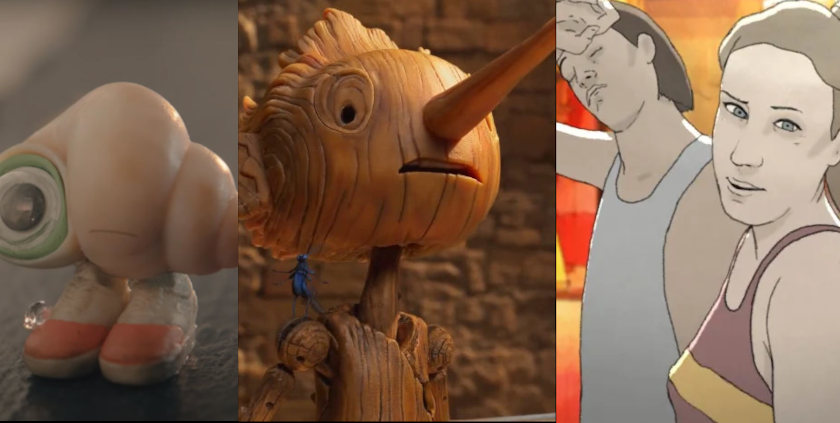'Pinocchio' (2022) Film Review: An Autumnal Stop-Motion Family Sonata
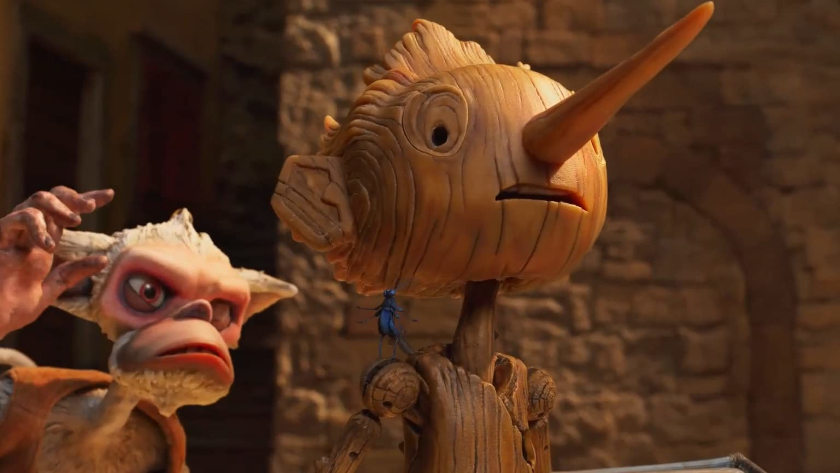
'Credere, obbedire, combattere'(believe, obey, battle). The Italian Fascist slogan is almost everywhere on the streets of Guillermo Del Toro and Mark Gustafson's 'Pinocchio', a much welcoming retelling of Carlo Collodi's famous story. To believe, obey and battle is the thing to avoid, and the new stop-motion (homely made) 'Pinocchio' puts inquiry, compassion, and sacrifice in those respective places.
Harbored over many years, the film-in-the-making had become something like the 'Holy Grail' of the animation stop-motion community, and everybody had put their hopes on a more adult wooden boy than the (still ever-young) classic 1940 Disney version. Del Toro went on to fabricate Pinocchio out of Gris Grimly’s 2003 illustrated edition of the Collodi stories; he chose right. Pinocchio (Gregory Mann) now comes with his crooked wooden pumpkin face in the line of monsters Del Toro famously loves -and everyone else loves to hate.
That said, 'Pinocchio' starts with the origin story of Gepetto (David Bradley) and his son Carlo, soon to be the victim of a war. A very shocking altar scene that takes place early ensures that Pinocchio and its origin story, as much as it owes to the origin story of Pixar's 'Up', is its own game. (To be completely honest, the too-clean-cut designed Carlo, as if coming out of a formulaic animated offering, won't be missed). Pinocchio himself here is still talkative and inquiring, but less gullible and naive; needy for love and adventure, but not indifferent to family affairs (and especially to the perennial need for a kid to win the love of his own father).
This in turn infuses the color palette and the production design of the film, which has its own autumnal brown hues -and a pertinent realistic representation of the Italian streets and neighborhood on the verge of fascism. Without moving much into the fantasy territory here -but the Wood Sprite and especially Death (Tilda Swinton) comes exactly out of 'Pan's Labyrinth'- Del Toro and Gustafson present an Italy that is on the verge of the last shine before its Fascist turn (production design: Guy Davis and Curt Enderle); at the same time, cinematographer Frank Passingham's breathtakingly captures the shadows to soon become dangers.
Scriptwriter Matthew Robbins and Del Toro here find a narrative solution that binds the famous Pinocchio adventures (including the celebrated whale sea adventure) together into an organic whole; they handle the necessarily episodic nature of the film by introducing distinct points of Pinocchio entering the underworld, which feel like restarting the taxi meter of life and death afresh, for a new and integrated adventure. The famous 'Pleasure Island' sequence of the Disney version is here distinctly mirrored in the Fascist Youth segment; the film's villain, the merciless 'entertainer' Count Volpe (Christoph Waltz), and the Fascist Podesta (Ron Perlman) represent the two sides of the same coin for the directors. Artistic integrity (Pinocchio is a performer after all) is on the verge of being consumed by relentless exploitation or to absolutist state interference.
Animation is as delightfully (and slightly) sloppy as stop-motion should be like, with the exaggerated movements reserved for the whale section (but CGI effects, though necessary, do not compliment the whole effort). Alexandre Desplat in the music department has made a full-on classical mode rousing and playful soundtrack in turns, in which the songs can also be part of the narration (and not just another musical animated convention).
Del Toro wanted his 'Pinocchio' film to look and feel like Mary Shelley's 'Frankenstein' story; obviously, the final effort is another take on acceptance, but there is more to that. Meditation on death is omnipresent in the film, and sobers our need to treat Pinocchio as another family film -even if death is part of the family. Apart from a brief breaking of the rules in the third act (and a retreat into a more familiar trope of children fantasy storytelling), Del Toro and Gustafson won't make many concessions toward a standard viewing of a family audience -even the Wood Sprite is topless here. Jimini Cricket (Ewan McGregor) is also transformed from a playful and annoying sidekick into a raconteur -with a love for the king of philosophical pessimism, Arthur Schopenhauer.
Yet, in another sense, 'Pinocchio' is family material; even a love letter to dad (the film is dedicated to Del Toro's father and mother) rings very sincerely in the course of the film. 'What happens, happens; and then we are gone' sounds like a very rewarding saying, after everything that is being said and done in 'Pinocchio'. It is a sensitively made autumnal stop-motion film sonata, and this Pinocchio version is here to stay.
Vassilis Kroustallis




